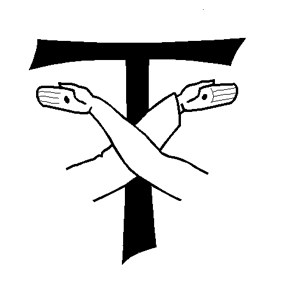
The Franciscan Order
Francis himself was born in Assisi, Italy in 1182. Worldliness, greed, wars, oppression and persecution prevailed. His father (Pietro or Peter) was a wealthy merchant who worked his way up in life, not a noble. He was also believed to be abusive and possibly violent to his mother and Francis. His mother (Pica) was gentle and pious, and loved and pampered her son. Francis never got much education and he may have even had a learning disability.
As a young man, St. Francis was far from saintly. He was proud, loved clothing and material wealth. He was an easy going playboy who drank, enjoyed fine food and squandered his father’s money. He was ambitious for honor, glory and money. He was also known to be generous, courteous, personable and well liked. After a time away at war, Francis underwent a religious conversion of his own. He renounced his family's wealth and instead spent his time rebuilding a church, working with the poor, preaching in public and begging. Two years later, he was visited by a friend who also denounced his world of wealth and joined him. Others would follow. As more people joined, Francis and his friends walked to Rome to request permission to start a new religious order. They met up with a Cardinal who arranged for an interview with Pope Innocent III. Both the Cardinal and the Pope were so impressed that they granted him an order at a time when others were denied.
First Order—the Friars
Second Order—the women or “Poor Clairs" Third Order—the secular order. The rules were abstracted directly from the Bible and included very simple messages which were interpreted literally
Franciscans never own anything and even the churches of today belong to the diocese and not to the order. Part of the Franciscan’s conviction is the Order of Penitence where they must make good and reconcile problems with family and friends. The TAU CROSS (looks like a T), worn by many Franciscans today, is said to be a blessing and the mark St. Francis would leave at the end of a letter.

Franciscans in the Pimería AltaBeginning in the spring of 1768 and ending in the spring of 1828, Franciscan missionaries lived at Tumacácori and administered the missions of Tumacácori, Guevavi, Calabazas, and Sonoitac. Juan Crisóstomo Gil de Bernabé May 1768—March 1772 After the expulsion of peninsular-born Spanish priests in 1828, Díaz resided at Cocóspera and rode the circuit to the presidio at Tucson and stopped at Tumacácori from 1837 until 1841 when he died. He was pastor to the entire northern Pimería, San Ignacio to Tucson. Antonio Gonzalez Early fall 1841—1842 or 1843 Other Franciscan missionaries who served in the Pimería Alta and were familiar with Tumacácori and its visitas include:
Two Tumacácori Franciscans were disinterred twice and reburied after their death and initial burial beneath the floor of the Jesuit church at Tumacácori. |
Last updated: May 6, 2025
